By Zoe Duncan, Honors Tutorial College Art History with a certificate in Women, Gender, & Sexuality Studies, ’26, Rare Book Intern, Spring ’25
As an Art History major, I often find myself working with materials as a researcher. My familiarity with the Mahn Center began over the summer of 2024, when I spent a few hours a week perusing manuscript facsimiles and getting to know the materials the Mahn Center has to offer scholars. When I began this internship, I found myself on the opposite end of the work. One of the many responsibilities of rare book/special collections librarians is to process materials and provide them to the public: to scholars, researchers, students and faculty alike. Over the course of this internship, I found myself carrying out some of these responsibilities by processing parts of the Gilbert and Ursula Farfel Collection of Incunable and Manuscript Leaves . The Farfel Collection is one element of the Manuscript & Printed Leaves the libraries has online in the Digital Archives .
Processing the Farfel Correspondence
Between the 1990s and early 2010s, Dr. Gilbert Farfel acquired an extensive collection of leaves from as far back as the 8th century and conducted research and inquiries into their origins. My job in the beginning of my internship was to process the many letters he kept from exchanges with various institutions and rare book librarians. In processing these materials, I identified their relation to the collection and sorted them into boxes that could be stored in the archives and identified within our database. Part of Dr. Farfel’s approach as a collector and researcher was to identify the specifics of the materials he had acquired, so he would consult rare book catalogues and send out feelers to institutions that possessed materials that may have related to items in his collection. When he donated his materials to Ohio University, he also donated many of the letters he received in this process.
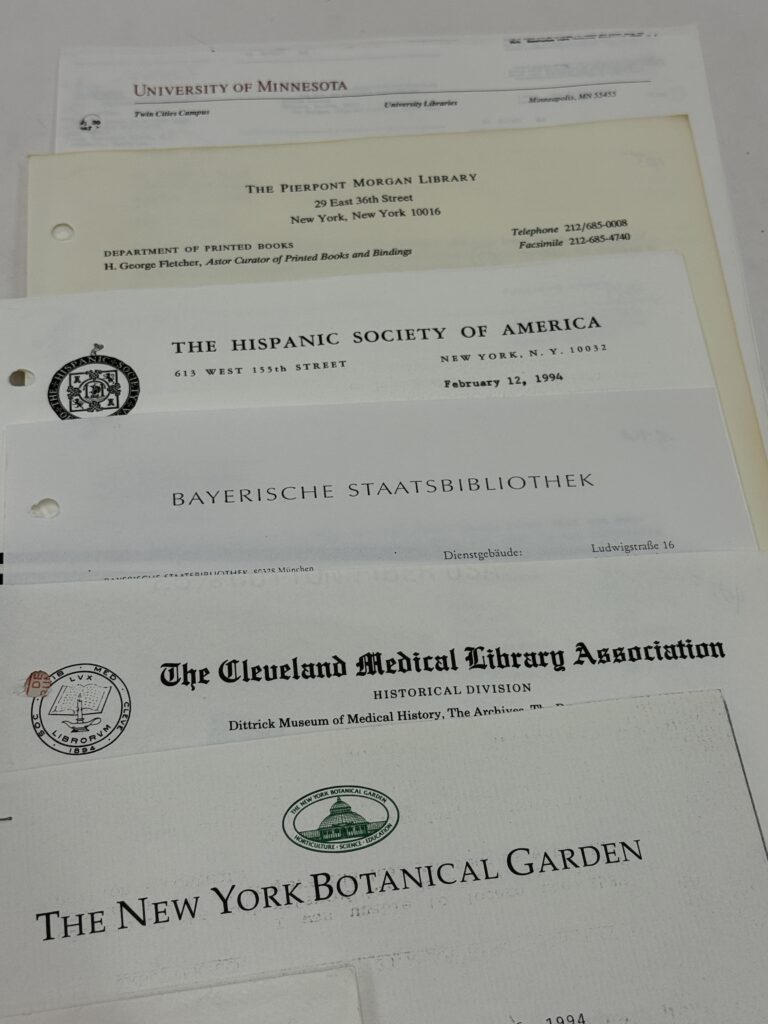
A very small sampling of correspondence from some of the institutions Dr. Farfel wrote to regarding his leaves (top to bottom): University of Minnesota, The Pierpont Morgan Library, The Hispanic Society of America, Bayerische Staatsbibliothek (Germany), The Cleveland Medical Library Association, and The New York Botanical Garden.
Because these letters came in the form of inquiry responses, it was my job to use minute details in the letters to identity which leaf they pertained to. This could be rather challenging at times, as some letters may have been as concise as a brief, “no, I don’t believe the scan of your leaf matches ours.” This did not give me a lot to work with, but it was not an altogether impossible task. Rather, I learned to cross-reference other letters and pick up hints from more detailed correspondence. In the end, I was able to process letters ranging in date from 1993 to 2010. It was an arduous process, but it was a necessary step in organizing this collection and allowed me to become intimately acquainted with the intricacies of the life of our collection.
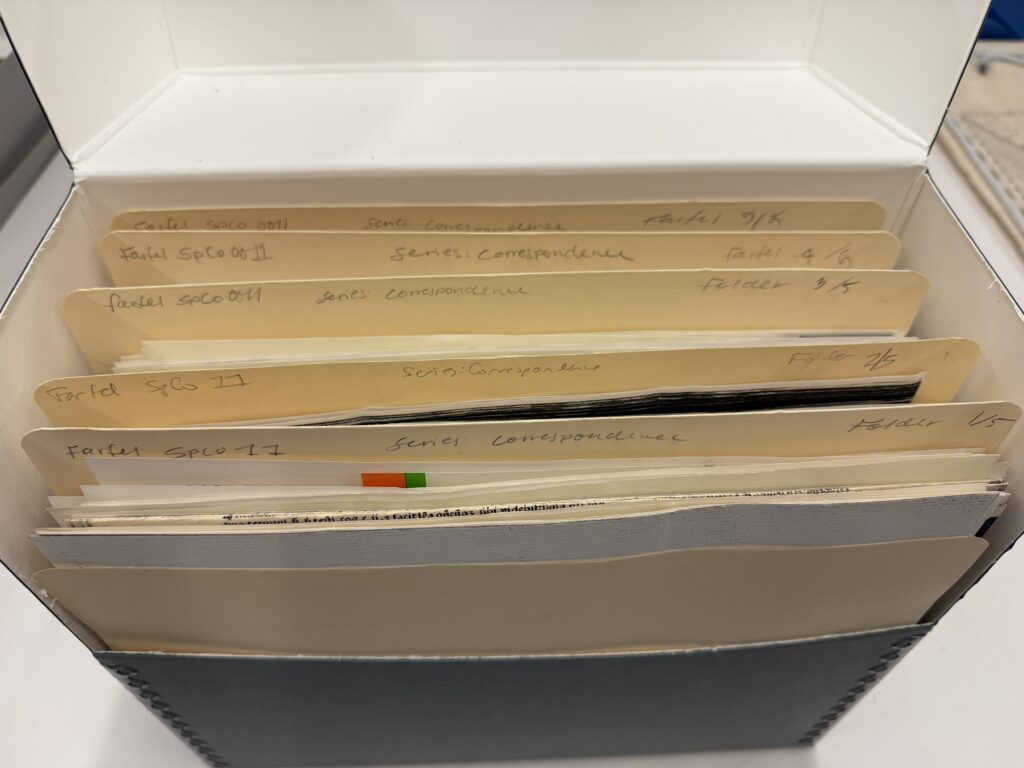
Spring Showcase
For an Archives & Special Collections Spring Showcase event, with another intern working on the Farfel Collection, we also had the opportunity to explore the collection ourselves and display some leaves we were interested in. I chose to display #015, a page from the House of Fame by Geoffrey Chaucer, #597, a vellum psalter (book that typically contains the Book of Psalms and often other prayers as well) from Ethiopia, and #645, a Latin bible from France depicting Judith beheading Holofernes.
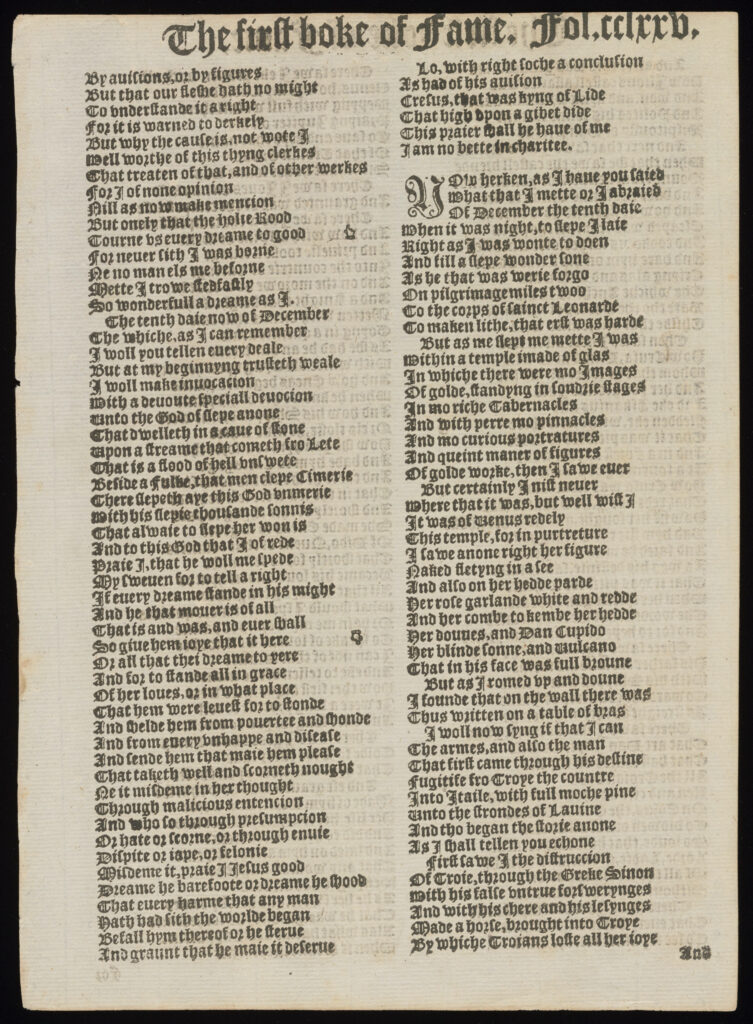
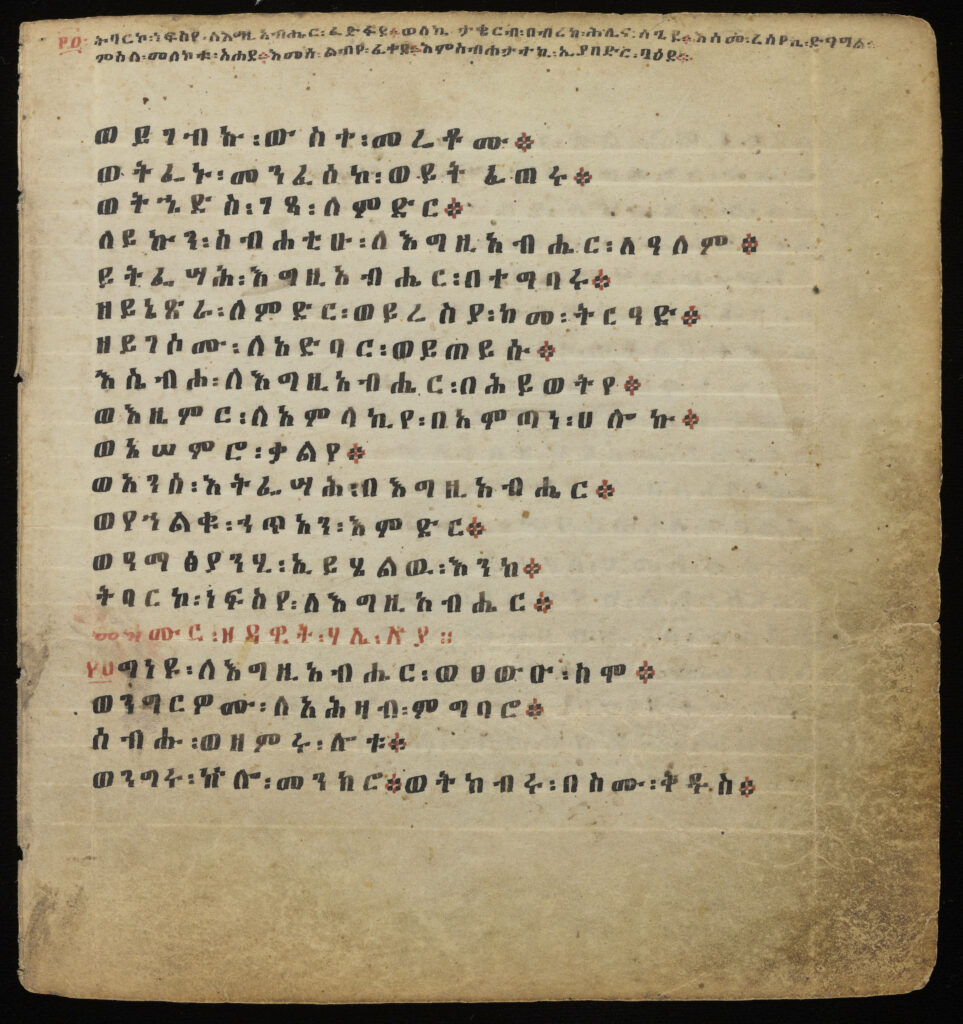
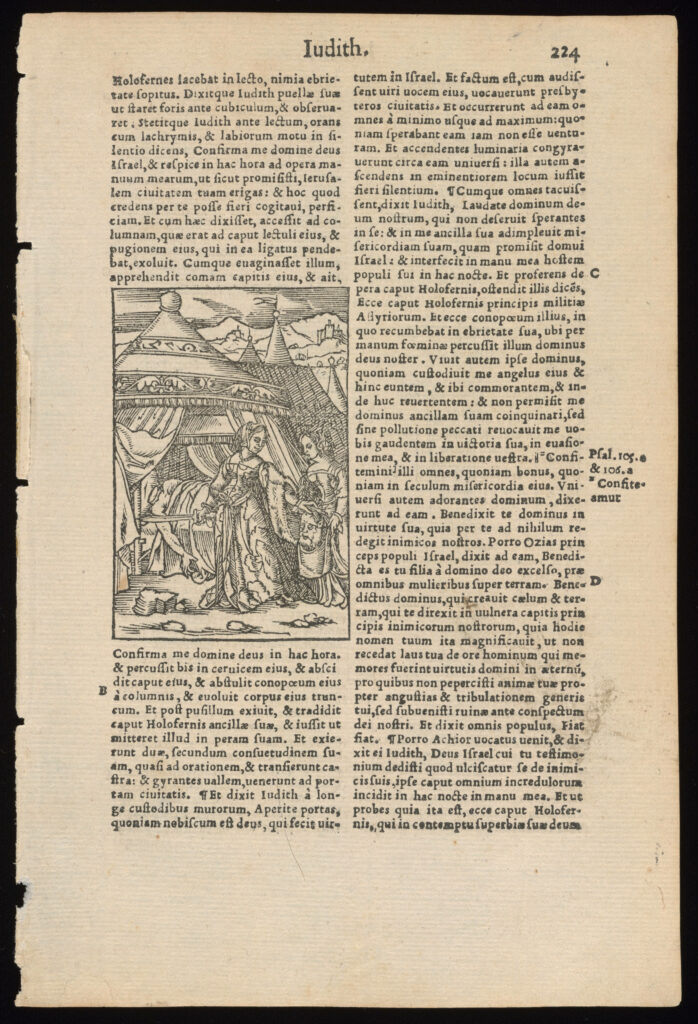
I chose to display and talk about each of these because they all related to specific academic interests of mine, and it was a great opportunity to showcase materials that directly related to things I had been studying throughout the semester. For instance, I was able to converse with peers and faculty about the Ethiopian psalter, as I was familiar with aspects of its creation due to my enrollment in an African history class.
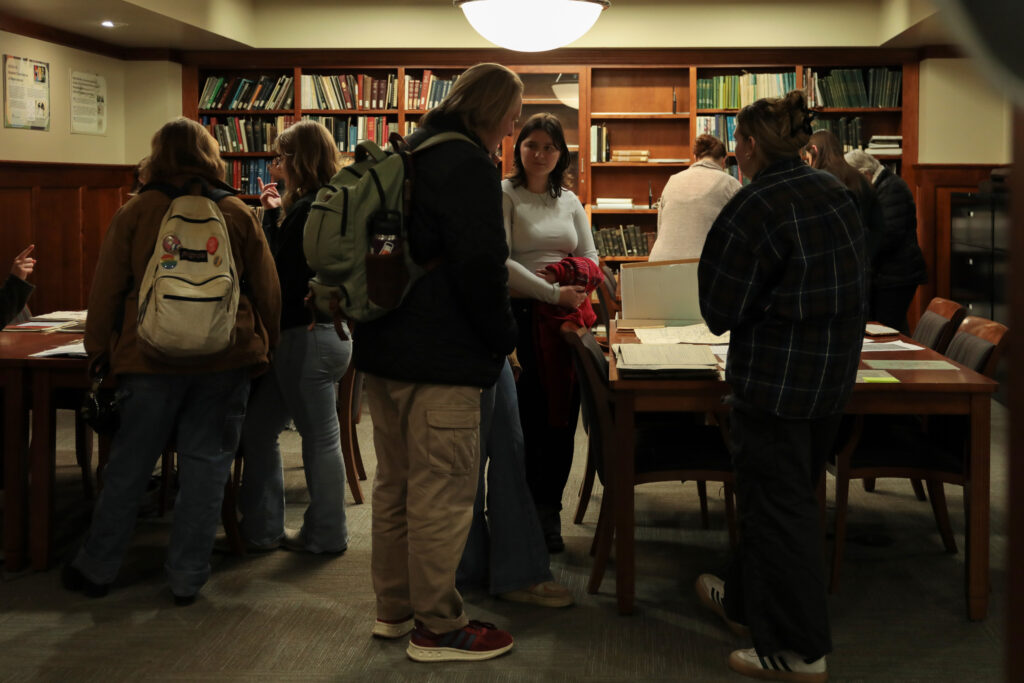
The Showcase was a great experience because I got to interact with a wide range of people and introduce them to some interesting features in our collection. It was also a great venue to exchange ideas, meet people, and learn about other unique materials held in the Mahn Center.
Creating the Exhibit
After organizing the correspondence folders, I worked with another intern, Rachael Herbert, to put together a digital exhibit: A Glance into Manuscript & Printed Leaves from 1200-1700 .
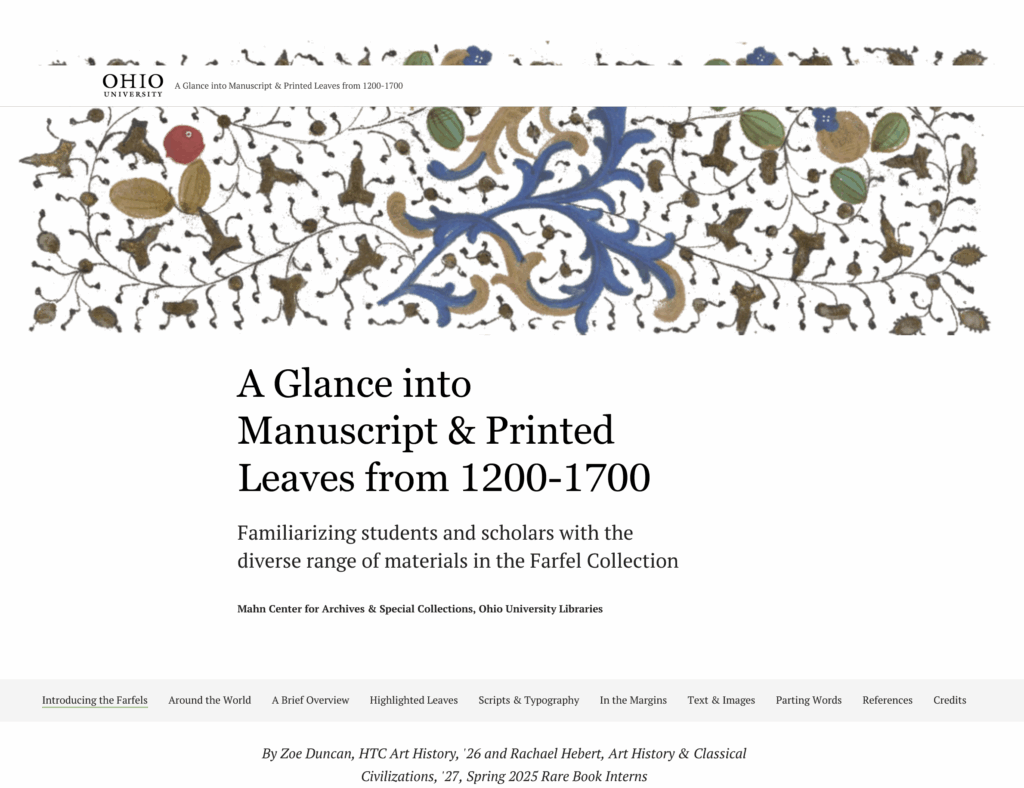
We went into this project with the goal in mind of making the Farfel Collection more visible. We wanted our exhibit to serve as an introduction to the collection so that students, faculty, and researchers alike could familiarize themselves with the materials. The process of making the exhibit required us to do independent research about certain leaves we wanted to feature. We worked with Dr. Farfel’s research and expanded on some of the ideas he explored in his research notebooks . We ultimately put together an exhibit that is intended to feel as though one is perusing a museum exhibit. We organized the information based on various connecting threads and highlighted leaves with unique features. We also wanted to emphasize the diverse range of materials in the collection, so we put together an interactive map from a sampling of the leaves we featured.
Altogether, working on the digital exhibit was an enriching experience because we had to put ourselves in the mindset of people who would not be as familiar with the collection as we became. We had to make intentional decisions, finding angles to present certain information in ways that conveyed why the collection is such an important resource to have on campus.
I will cherish my experience working in the Mahn Center and working so closely with the Farfel materials. It was endlessly helpful in familiarizing me with the important work of rare book and special collections librarianship, and I am excited to take what I’ve learned in the Mahn Center with me as an academic and lifelong learner.
Further Exploration
Read about all the libraries’ Manuscript and Printed Leaves
Browse the Farfel Collection: Gilbert and Ursula Farfel Collection of Incunable and Manuscript Leaves
Digital Exhibit: A Glance into Manuscript & Printed Leaves from 1200-1700
